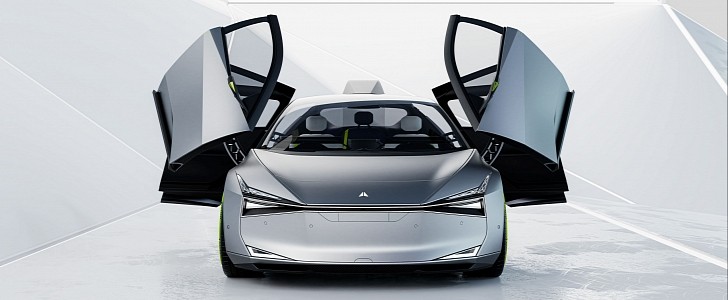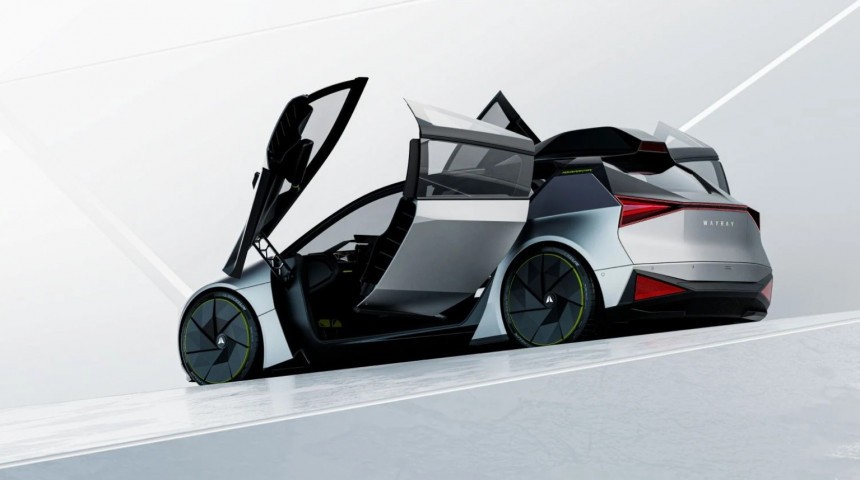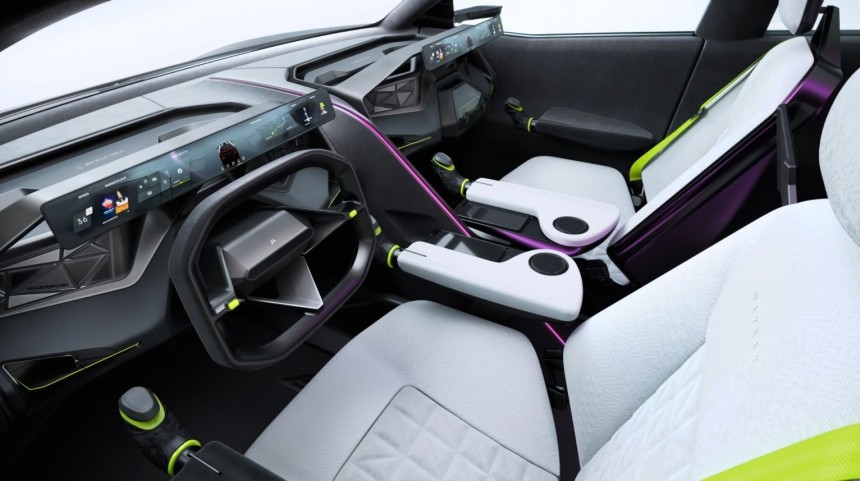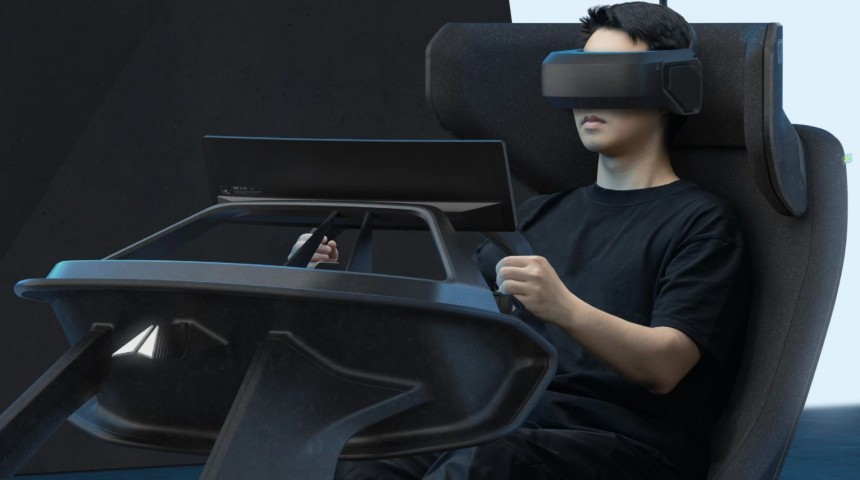The automotive world is heading towards an autonomous, digital future. And while the self-driving car is taking its sweet time to arrive, the advancement of technologies like virtual reality and artificial intelligence is already starting to reshape the driving experience. Swiss start-up WayRay is already reimagining everyday rides with its Holograktor – its "very first Metaverse device on wheels."
The idea of a car connected to a digital world is not new. Audi already showcased the technology in the e-tron for the first time at the CES 2019. The way it works is by taking real data like speed, location, steering, and acceleration and matching it with an artificial setting.
That's what WayRay's Holograktor is doing as well. The company wanted to deliver something that would turn every ride into a personalized, immersive experience. Thus, it created an autonomous EV concept capable of learning the passenger's habits and preferences, including the usual routes taken.
Holograktor has a total of eight cameras mounted in key spots that allow for a combined 360-view. If you think that is a lot, the vehicle also sports eight ultrasonic sensors integrated into the front and read bumpers that provide a full picture of the surroundings.
The Lidar technology cannot be missed from the mix either. Together, these features enable advanced driver-assistance systems (ADAS) to warn passengers of any risk of collision or other potential dangers.
The interior of the car is based on a 2+1 configuration. Since the front seats were designed with more space between them, it allows all occupants to easily see the holographic windshield. Speaking of its windshield, that's not the only gateway to the digital universe. The side window also connects the two worlds.
Through WayRay's proprietary Deep Reality Display technology, which creates multiple planes of virtual images and places them at variable distances based on real-world objects, passengers can enjoy a fully immersive experience.
The Metaverse, a shared virtual reality, combines data from social networks such as upcoming events, friends' locations, and suggestions to transform the world around users into an interactive and customized interface. So, while riding, people may organize their day or learn something new.
And not only that. They can also play games in Metaverse. Holograktor's seats have armrests equipped with joysticks that bring gaming into reality. Users can enjoy an altogether new universe of immersive games by simply using the advanced controls that include two front buttons and a stick on top.
They can also customize the in-vehicle infotainment settings according to their liking using the joysticks. Passengers can set what they desire to virtually display around them by changing the True AR presets and apps.
One of the options available is the VR Remote Control service. With this feature, Holograktor can be controlled remotely from a small driving station by a single driver. Thanks to all of the sensors and cameras mounted on the actual automobile, the remote driver gets a first-person POV experience while wearing the VR headset.
The service makes it possible for the Holograktor to be utilized as a ride-hailing car. Passengers can request a ride via the Holograktor app. Once the driver accepts a request, the automobile does a self-diagnosis check before handing over control. With the VR Remote Control, people get to fully immerse themselves in the Metaverse without having to worry about driving.
Other features included in the Holograktor are the AirKnife system. It's a new technology that works with the air conditioning system to filter the air from potentially harmful bacteria. It acts as a barrier that cleans the air throughout the cabin.
There's no word on the car's speed or range. That's because WayRay focused on offering a new take on what the future of driverless cars might look like. For now, the Holograktor is just a concept. However, Sasha Selipanov, chief designer on the Holograktor project, mentioned that "we always had a production car as our goal." So, we might actually see the EV take shape in the future.
That's what WayRay's Holograktor is doing as well. The company wanted to deliver something that would turn every ride into a personalized, immersive experience. Thus, it created an autonomous EV concept capable of learning the passenger's habits and preferences, including the usual routes taken.
Holograktor has a total of eight cameras mounted in key spots that allow for a combined 360-view. If you think that is a lot, the vehicle also sports eight ultrasonic sensors integrated into the front and read bumpers that provide a full picture of the surroundings.
The interior of the car is based on a 2+1 configuration. Since the front seats were designed with more space between them, it allows all occupants to easily see the holographic windshield. Speaking of its windshield, that's not the only gateway to the digital universe. The side window also connects the two worlds.
Through WayRay's proprietary Deep Reality Display technology, which creates multiple planes of virtual images and places them at variable distances based on real-world objects, passengers can enjoy a fully immersive experience.
The Metaverse, a shared virtual reality, combines data from social networks such as upcoming events, friends' locations, and suggestions to transform the world around users into an interactive and customized interface. So, while riding, people may organize their day or learn something new.
They can also customize the in-vehicle infotainment settings according to their liking using the joysticks. Passengers can set what they desire to virtually display around them by changing the True AR presets and apps.
One of the options available is the VR Remote Control service. With this feature, Holograktor can be controlled remotely from a small driving station by a single driver. Thanks to all of the sensors and cameras mounted on the actual automobile, the remote driver gets a first-person POV experience while wearing the VR headset.
Other features included in the Holograktor are the AirKnife system. It's a new technology that works with the air conditioning system to filter the air from potentially harmful bacteria. It acts as a barrier that cleans the air throughout the cabin.
There's no word on the car's speed or range. That's because WayRay focused on offering a new take on what the future of driverless cars might look like. For now, the Holograktor is just a concept. However, Sasha Selipanov, chief designer on the Holograktor project, mentioned that "we always had a production car as our goal." So, we might actually see the EV take shape in the future.





























